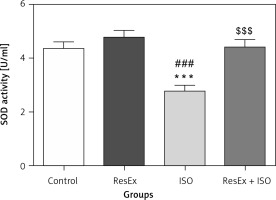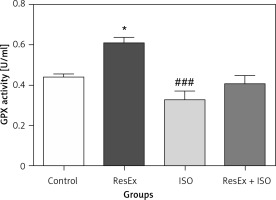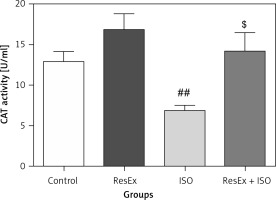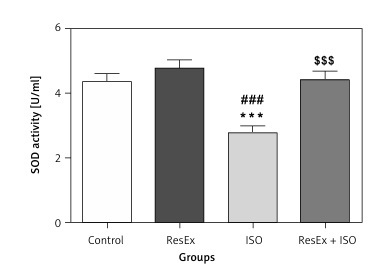Introduction
The heart is thought of as a pump that receives blood from venous blood vessels at low pressure, supplies energy to the blood (raises it to high pressures) by contracting around the blood within cardiac chambers, and then ejects the blood into the arterial blood vessels [1]. Therefore, the cardiovascular system must be highly adaptable to meet the diverse demands placed upon it by the body [1, 2]. To continuously accomplish this crucial function and to maintain the high oxidative of the beating heart, the myocardium must obtain enough oxygen and a proper amount of nutrients within an extended network of coronary arteries [2, 3]. Nevertheless, if the coronaries have a functional defect and their vasodilator reserve is restricted, an increase in heart rate can prevent coronary flow and lead to myocardial ischemia and angina pain, thereby, causing heart failure [3]. A similar common cause of heart failure and the expanded pathology correlated with coronary artery disease is a myocardial infarction that is done by cardiomyocytes that experience ischemia. The resultant myocardial injury due to ischemia-reperfusion damage is equivalent to ischemic duration [2]. Indeed, chronic ischemia leads to the enormous death of cardiomyocytes, which is necessary to prevent it from reducing the infarct area. Ischemia-reperfusion produces a condition in which the restoration results in inflammation and oxidative damage through the induction of oxidative stress rather than the restoration of normal function. Oxidative stress causes to produce reactive oxygen species (ROS) that are considered to be triggering causative factor of coronary heart disease and other cardiomyopathies [4]. If reactive oxygen species production is increased by the ischemia-reperfusion (IR) process, a variety of cellular damage such as DNA strand breaks, protein carboxylation, and lipid peroxidation would occur on different biomolecules [5]. DNA damage by ROS has been revealed to be the primary risk factor for the improvement of cardiovascular disease and cancer [6]. For many years almost all methods have been conducted to attenuate cardiac function during ischemia. However, the result of several different surveys revealed many guidelines that put most of the emphasis on drug intervention. Therefore, alternative therapeutic strategies require to provide cardioprotection against ischemia-reperfusion-induced damage by restricting ROS production. However, the only more effective methods for cardioprotection against IR is proper physical activity [7–9]. Various research has reported that exercise training promotes cardioprotection and improves myocardial immunity to IR injury [10]. The surveys have pointed to exercise as important in producing adaptive responses to oxidative stress, which regulates cell redox state and increases the resistance against ROS [11]. But ROS production during regular exercise training induces adaptation by improving the mitochondrial antioxidant enzyme capacity of myocytes [12, 13]. Somani et al. reported that acute exercise increases the activity of myocardial antioxidant enzymes [14]. Fatouros et al. and Beltran Valls et al. have found that both aerobic and resistance training can reduce oxidative stress by improving both pro-antioxidant and antioxidant markers [15–19]. While convincing evidence demonstrates that endurance training can result in significantly improving antioxidant capacity that could attribute to the myocardial tolerance to ischemia-reperfusion-induced injury [20–23]. The cardioprotection of resistance training by improving antioxidant capacity against ischemia-reperfusion injury has not been examined. While excessive ROS production has been linked to resistance exercise, studies have consistently demonstrated significant beneficial effects of resistance training on cardiovascular health [24–26]. Numerous studies have investigated the beneficial effects of resistance exercise (ResEx) as a non-pharmacological therapy for preventing various cardiovascular diseases, the processes by which strength training promotes tolerance of myocardia to IR risk remain unclear. Therefore, the present study focuses on the cardioprotection effect of 8-week resistance training against IR-induced injury.
As a result, the main purpose of this research was to examine the superoxide dismutase (SOD), glutathione peroxidase (GPX), and catalase (CAT) responses to 8 weeks of exercise in Wistar rats after ischemia induced by isoproterenol. Therefore, the following was hypothesized: 8-week resistance training promotes cardiac tolerance in the model of ischemia-reperfusion in rats.
Material and methods
In this study, 24 adult male Wistar rats (weighing 220–240 g) were purchased from the Drug Applied Research Center of Tabriz University of Medical Sciences and housed at a room under the controlled condition of temperature 22 ±2℃ with 12 h’ light/dark cycles and 45–55% relative humidity. All animals received water and rodent chow ad libitum for 8 weeks.
Experimental design
The rats were randomly assigned to one of three groups matching in weight: 1. Isoproterenol (ISO) group that received ISO (150 mg/kg) after 8 weeks; 2. Resistance training (ResEx) group that performed resistance training for 8 weeks; 3. Resistance training + isoproterenol (ResEx + ISO) group that performed resistance training for 8 weeks and received ISO (150 mg/kg) 48 h after the last session of ResEx.
Resistance training protocol
Animals in the ResEx and ResEx + ISO groups performed resistance training on a 110-cm ladder apparatus with 2-cm steps and an 85° inclination after familiarization. According to a previous study, the familiarization period consisted of climbing exercise on the ladder with 8–12 repetitions, 3–5 sets, and 3 days a week without weight for a week by Hornberger et al. As previously described, exercise training began 3 days after the familiarization period. Animals in the experimental/ResEx group performed an 8-week resistance training protocol five times per week. Each training session consisted of 8 sets of climbing, with 8-12 repetitions per set, followed by a 60-second rest period between sets. During the second performance, the overload was set at 50% of the animal’s total body mass, attached to the base of the tail. Subsequently, the overload was increased according to the following schedule: 75% for series three and four, 90% for series five and six, and 100% for series seven and eight. Between each series, the animal was allowed to rest for 60 seconds in a shelter at the top of the ladder (Table I).
Ischemia-reperfusion protocol
Following the exercise protocol, ischemia was induced by intraperitoneal injection of isoproterenol at a rate of 85 ml/kg dissolved in 1 ml saline for 24 h on a consecutive day. The amount of the selective dosage was based on previous studies and also a pilot study of hydration. 24 h after the second injection, ischemia was induced in mice, which was confirmed by electrocardiography [1].
Heart tissue homogenization
At the conclusion of the experiment, all rats were euthanized with an intraperitoneal injection of ketamine hydrochloride at a dose of 125 mg/kg [2]. To minimize anesthesia complications, the animals were fasted for 6 hours prior to injection [3]. The hearts were excised, rinsed with cold phosphate-buffered saline (PBS), immediately frozen in liquid nitrogen, and stored at –70°C for subsequent biochemical analysis.
Antioxidant enzyme assays
The superoxide dismutase (SOD) activity was determined using the RASOD kit (Randox, Crumlin, UK) according to the method of Delmas-Beauvieux et al. [4]. The cardiac samples were homogenized with PBS (pH 7.4) and centrifuged at 10 000 g for 15 min at 4°C. Then, the supernatant and kit reagents were added to plate wells. The absorbance was assayed spectrophotometrically at 505 nm (Pharmacia Biotech, England). The activity of glutathione oxidase (GPX) was determined using the RANSEL kit (Randox, Crumlin, UK). Glutathione reductase at a concentration equal to or greater than 0.5 U/l and of NADPH solutions at 0.28 mmol/l were prepared to convert the oxidized glutathione immediately to its reduced form. The reduction in absorbance at 340 nm and 37°C was measured using a spectrophotometer. CAT was estimated by the method described by Aebi [5], which is a quantitative spectroscopic method developed for following the breakdown of H2O2 at 240 nm in unit time for routine studies of CAT kinetics. The results were expressed in terms of units of SOD, GPX, and CAT activities per ml.
Statistical analysis
Data were analyzed using Graph Pad Prism 6.01 (Graph Pad Software Inc., La Jolla, CA, USA) software and expressed as mean ± standard error of the mean (SEM). Parameters were analyzed by one-way ANOVA. The post hoc Tukey test was used to determine the statistical significance between groups. A p-value of less than 0.05 was considered statistically significant.
Results
The results showed that 8 weeks of incremental resistance training cause a reduction of BW in comparison to other groups (p < 0.05, Table II).
Table II
Body weight in the experimental groups
| Groups | Control | ResEx | ISO | ResEx + ISO |
|---|---|---|---|---|
| BW final [g] | 264.17 ±2.1 | 230.3 ±3.5* | 252.5 ±2.1 | 211.33 ±1.8* |
SOD activity
Based on the finding of this study, 8 weeks of incremental resistance training did not significantly increase SOD activity compared to the control group. Moreover, infarction attenuated the activity of SOD as compared to the control and ResEx groups (p < 0.001). Nevertheless, 8 weeks of resistance training could prevent decreased SOD activity as compared to the ISO group (p < 0.001, Figure 1).
Figure 1
Effects of 8 weeks of ResEx on SOD activity in the heart of rats with isoproterenol-induced myocardial infarction. The data were expressed as mean ± SEM (n = 6)
SOD – superoxide dismutase, ResEx – resistance training, ISO – isoproterenol, ResEx + ISO – resistance training + isoproterenol. ***P < 0.001 compared to the control group, ###p < 0.001 compared to the ResEx group, $$$p < 0.001 compared to the ISO group.

GPX activity
As shown in Figure 2, 8 weeks of resistance training significantly increased GPX activity in comparison to the control group (p < 0.05). The GPX activity was significantly lower in ISO-treated rats when compared with the ResEx group (p < 0.001). Eight weeks’ resistance training had no significant effect on cardiac GPX activity in ISO-treated rats.
Figure 2
Effects of 8 weeks of ResEx on GPX activity in the heart of rats with isoproterenol-induced myocardial infarction
The data were expressed as mean ± SEM (n = 6). GPX – glutathione peroxidase, ResEx – resistance training, ISO – isoproterenol, ResEx + ISO – resistance training + isoproterenol. *P < 0.05 compared to the control group, ###p < 0.001 compared to the ResEx group.

CAT activity
Reduction of CAT activity was observed in the heart of ISO-treated rats in comparison to the ResEx group (p < 0.01). ResEx restored the ISO-depleted CAT (p < 0.05) activity significantly in the heart (Figure 3).
Figure 3
Effects of 8 weeks of ResEx on CAT activity in the heart of rats with isoproterenol-induced myocardial infarction
The data were expressed as mean ± SEM (n = 6). GPX – glutathione peroxidase, ResEx – resistance training, ISO – isoproterenol, ResEx + ISO – resistance training + isoproterenol. ##P < 0.01 compared to the ResEx group, $p < 0.05 compared to the ISO group.

Discussion
Ischemia induces oxidative stress, which results in myocardial damage by increasing oxygen species and depleting the body’s natural antioxidants. However, the body is equipped with an over-oxidative defense system including catalase, superoxide dismutase, and glutathione peroxidase enzymes known as antioxidant enzymes which prevent the formation of hydroxyl radicals [3]. This study was performed for the first time to determine whether resistance training plays a role in cardiac protection in a model of ischemia-reperfusion induced. The primary aim of our study was to examine the effect of 8 weeks of resistance training on cardiac tolerance against induction of ischemia. The results of the present study showed that 8 weeks of incremental resistance training did not significantly increase superoxide dismutase activity compared to the control group. The SOD activity in rats that had induced ischemia did not show a significant decrease with resistance training. The results of the present research are similar to the study of Azizbeigi et al. about the activity and levels of SOD protein in the myocardium of trained rats were higher [1, 6]. On the other hand, several studies are inconsistent with the results of the present study [7–11]. In vitro studies have shown that increased SOD has a significant role in protecting the heart during exercise and SOD alone does not prevent induced ischemia in the rat heart tissue [12]. In line with the present study, Yamashita et al. reported that blocking SOD expression during exercise significantly reduces the protective effect of exercise on the heart against ischemia and leads to cell death through necrosis and apoptosis [13]. French et al. also reported that elevated SOD during exercise prevented myocardial infarction following ischemia and moderated the oxidative damage induced by ischemia, which results in increased calcium and calpain activation leading to myocardial injury [14]. Research studies have also been shown that resistance training has the main role in the prevention of metabolic and circulatory disorders [15, 16]. It is mentioned that exercise induces cardioprotection via allosteric activation of the endogenous antioxidant enzyme superoxide dismutase which is located within myocytes [20]. Unfortunately, there are only two studies on the cardioprotective effect of resistance training. In these studies [21, 22], rats were allocated to resistance exercise for 28 and 84 days, based on the same protocol and also animals were adapted to resistance training. After the last exercise bout in the training program, the hearts were excised and perfused. The 28 days’ exercise training did not affect the infarct size, left ventricular developed pressure, and coronary flow compared to the sedentary IR control group [21]. The 84 days’ resistance exercise training decreased the infarct size and allowed maintenance of higher coronary flow and left ventricular developed pressure throughout ischemia and reperfusion compared to the untrained controls [22]. The results of these research studies suggest that only long-term resistance exercise training can be utilized for cardioprotection against IR. Concerning GPX enzyme in cardiac tissue samples, the results showed that 8 weeks of resistance training significantly increased the GPX enzyme level compared to the control group but it did not have a significant effect on the isoproterenol group (ISO). Consistent with the results of the present study, Ranjbar et al. showed that 10 weeks of resistance exercise training can decrease ischemia-reperfusion injury. It has been demonstrated that this mechanism may be related to a decrease in oxidative stress which is normally associated with ischemia-reperfusion [23]. The other results showed that resistance training prevented the reduction of catalase activity in the isoproterenol with the resistance training group (ResEx + ISO). Actually, resistance training in the rats of the resistance training group increased CAT activity. This result agrees with some studies mentioned that resistance training increased antioxidant enzyme activity and decreased the production of reactive oxygen species [24]. On the other hand, in contrast with the present study some outer demonstrated that resistance training had no effect on antioxidant enzymes especially on CAT activity [7]. Among the most important pathological factors during ischemia that lead to cellular damage is the increase of reactive oxygen species which mediated oxidant injury in the myocytes. It is mentioned that increasing antioxidant enzymes can protect the heart against ischemia-reperfusion injury by reducing the amount of ROS. Exercise increases the capacity of endogenous antioxidant enzymes which improve cardiac tolerance to IR [17].
In conclusion, the results of this study demonstrated ischemia induced by isoproterenol injection in rats that did 8 weeks of resistance training did not lead to a decrease in SOD activity, as well as prevented the reduction of CAT activity.



